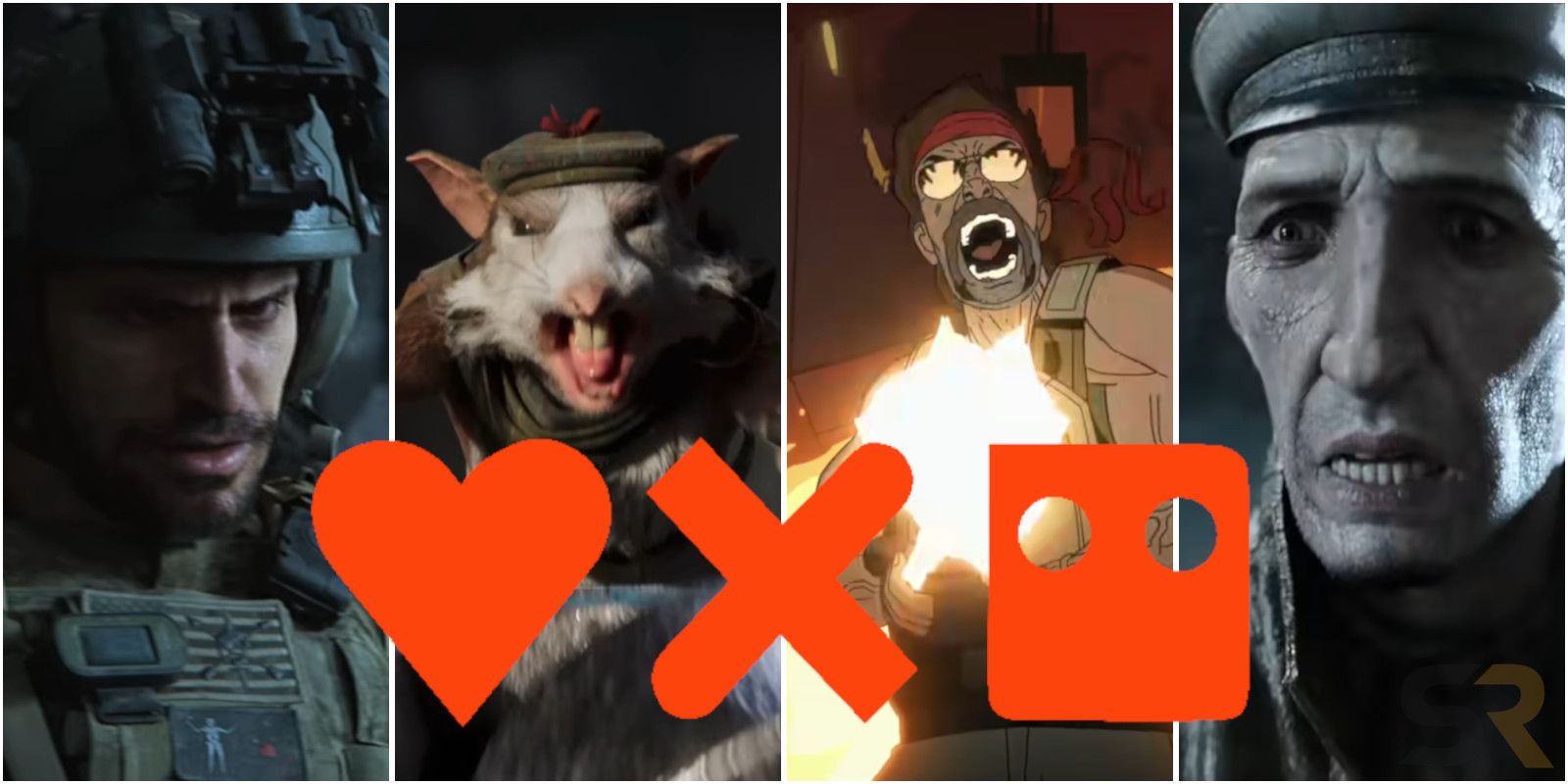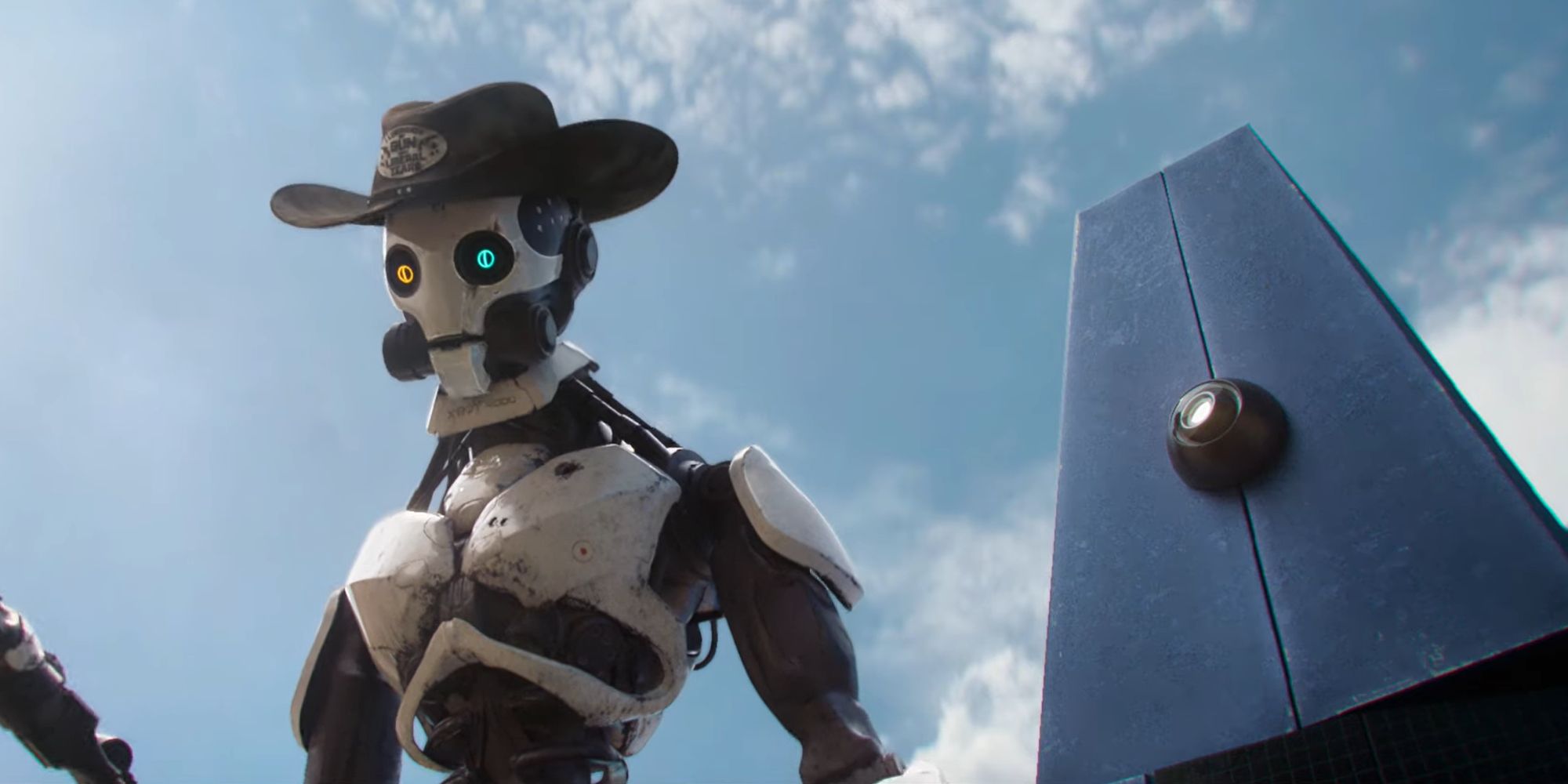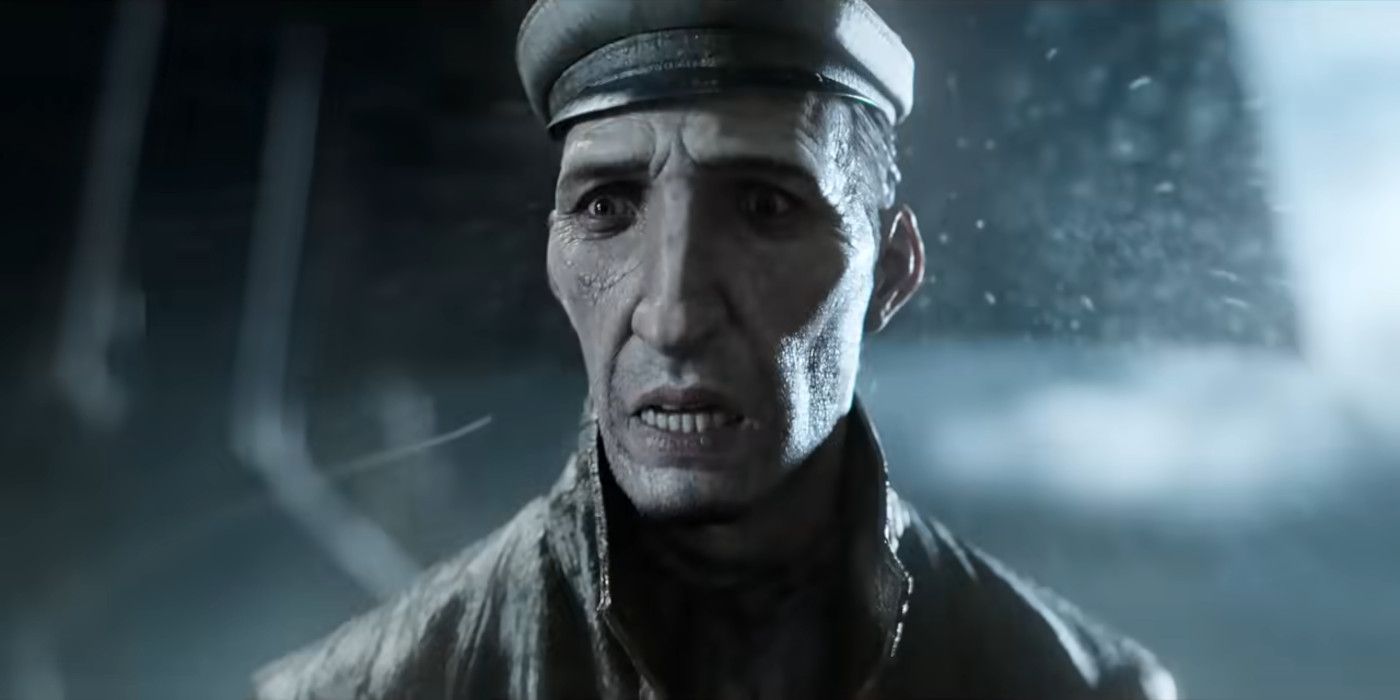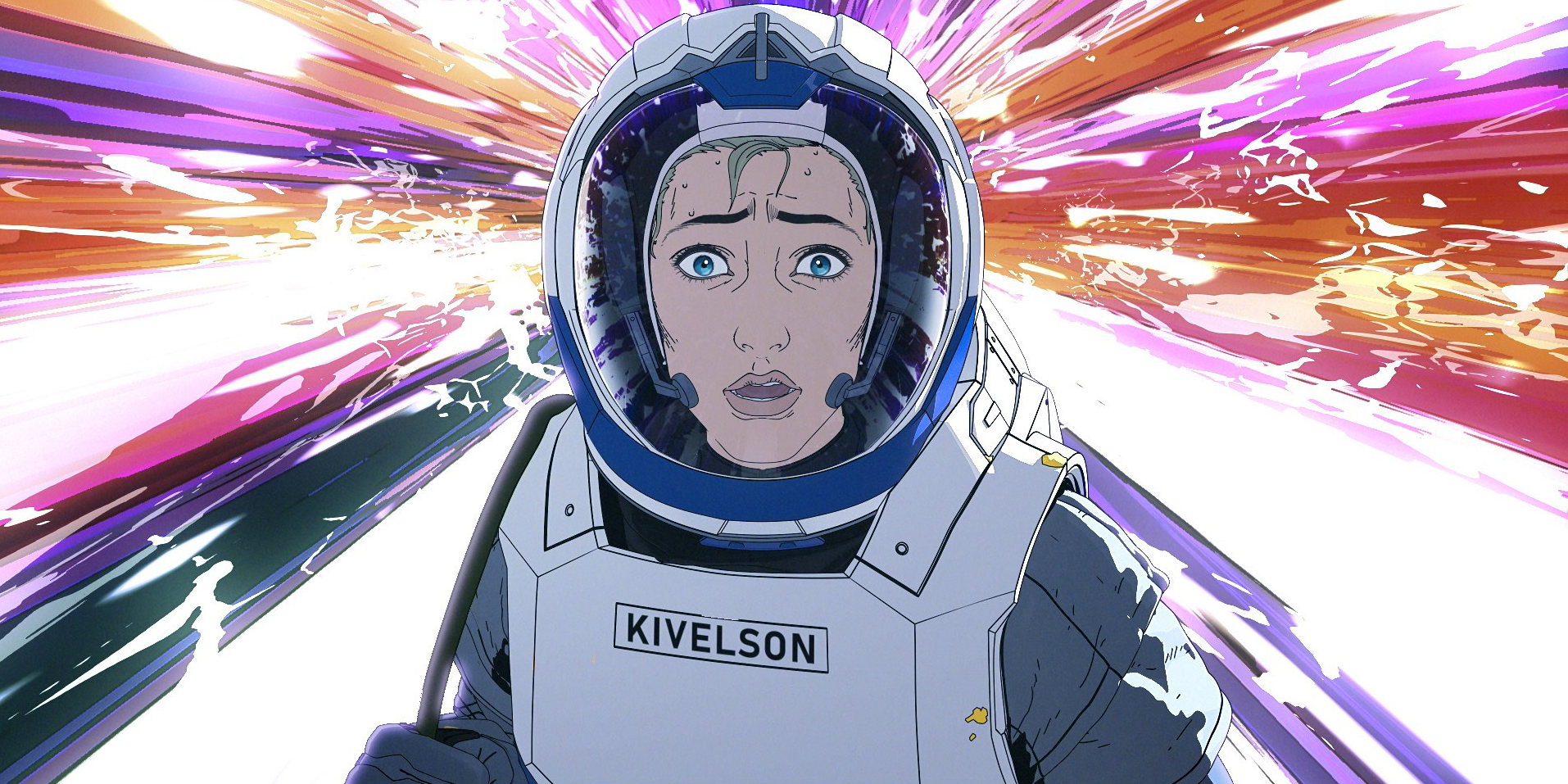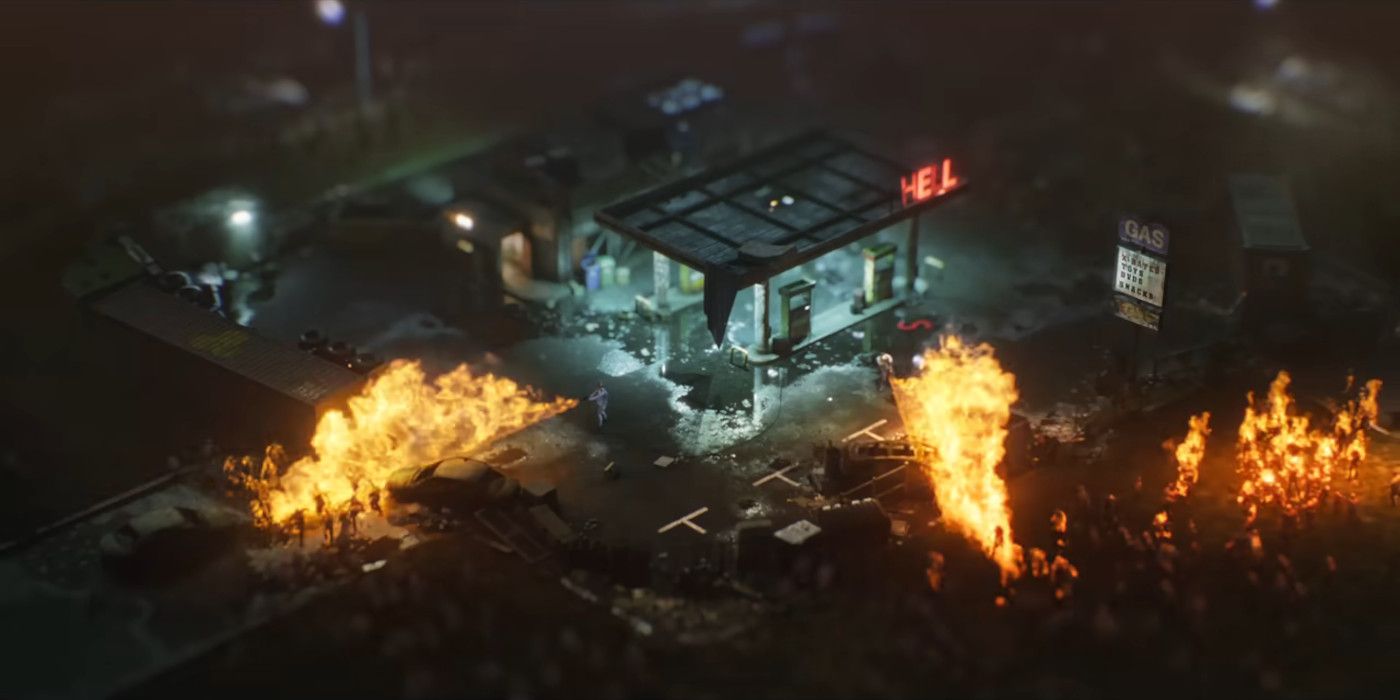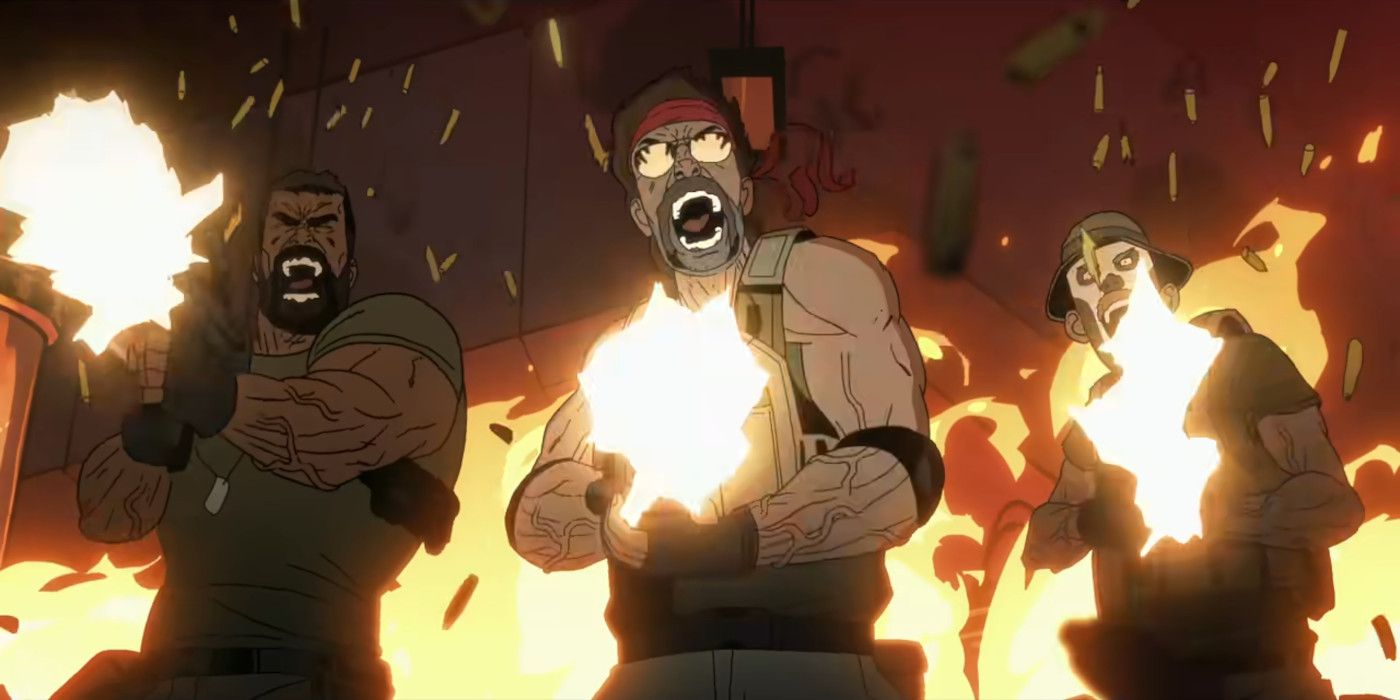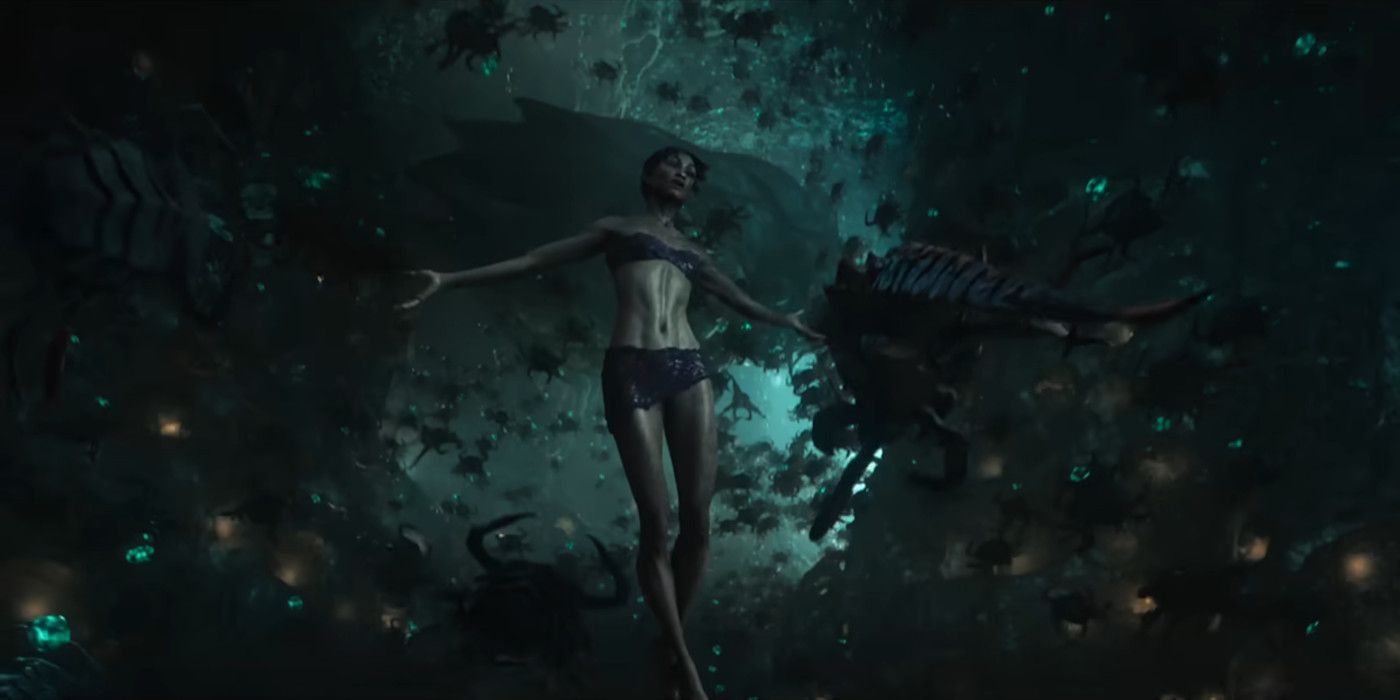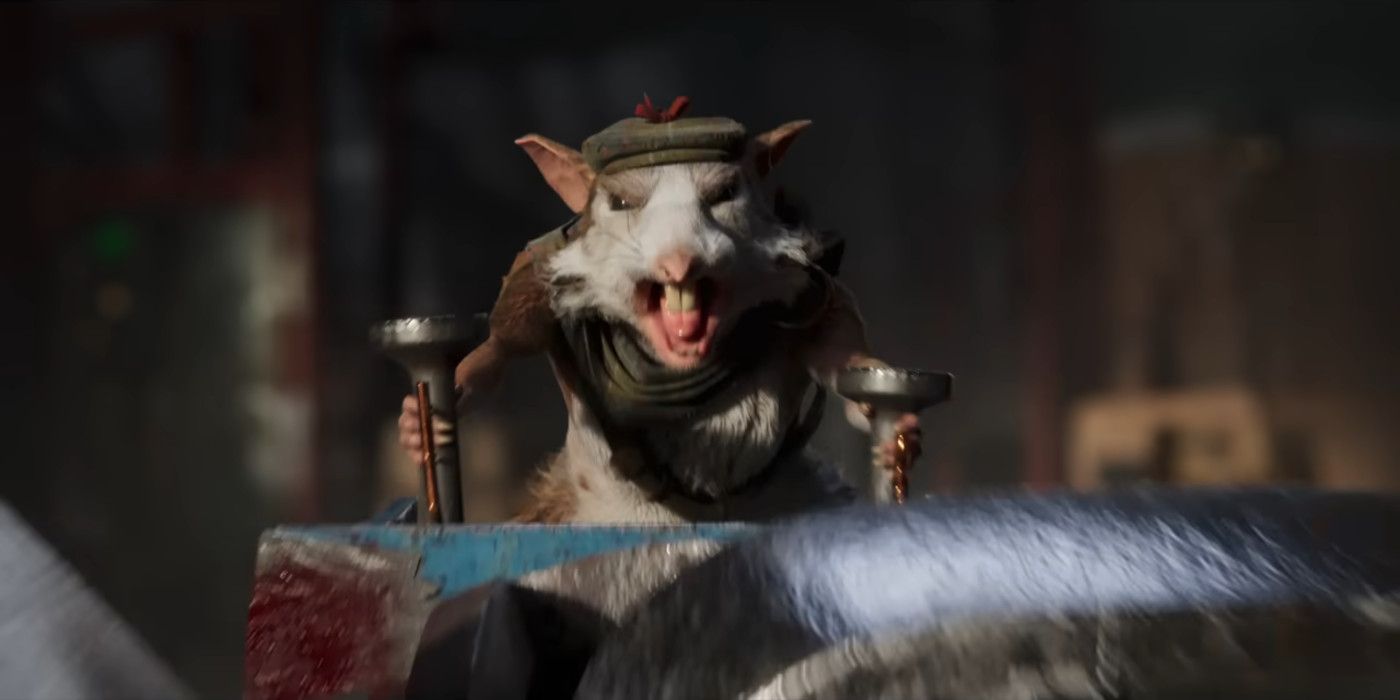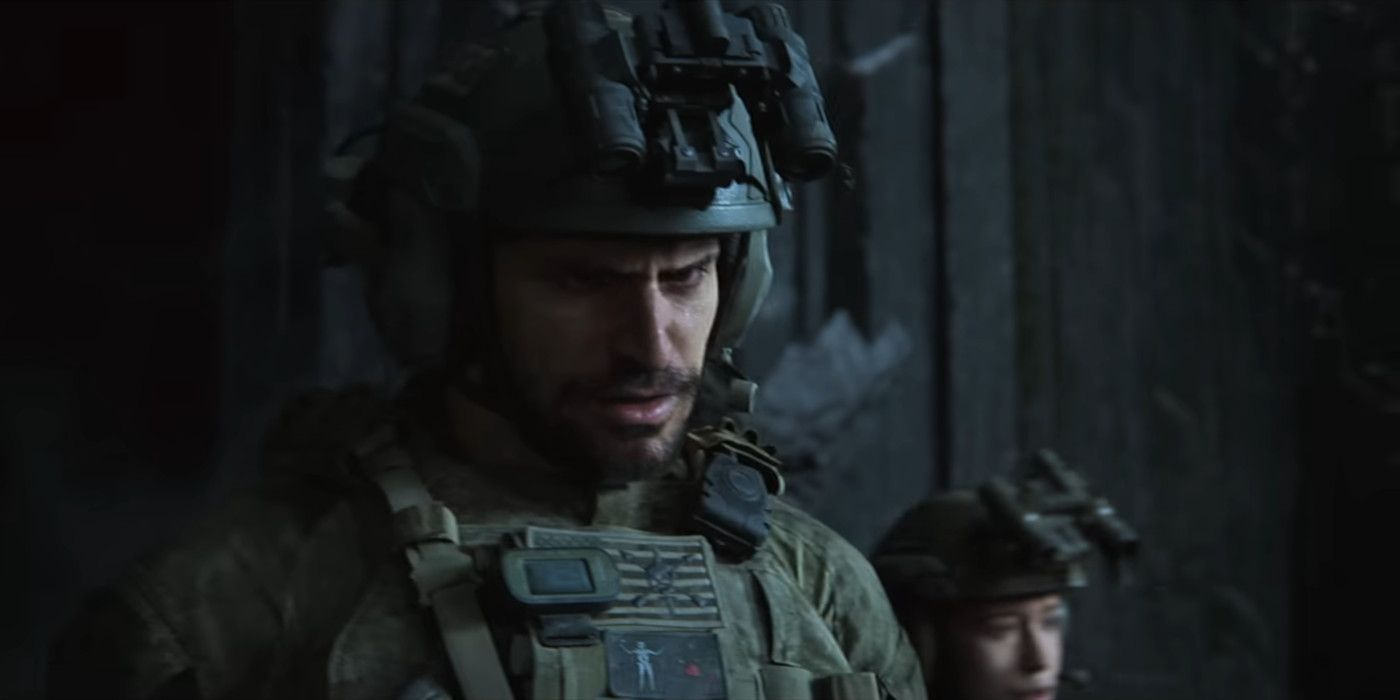The third volume of Love Death & Robots brings 9 new episodes of Netflix's edgy adult animation anthology to the streaming service with a variety of visually inventive sci-fi and fantasy shorts in a range of genres from futuristic comedy to military horror or cerebral science fiction. While some of the stories are more straightforward entertainment, others leave the viewer with a thought provoking ending or shocking cliffhanger.
Executive produced by Tim Miller and David Fincher, Love, Death & Robots is the evolution of a pitch for a Heavy Metal anthology remake the duo tried to develop with James Cameron over a decade ago before eventually arriving on Netflix in its current form, adapting a variety of short stories with the occasional original script written for the show. The first volume arrived on Netflix in 2019 with 18 episodes, garnering enough popularity for an 8 episode second season and 9 episode third season.
Love, Death & Robots Volume III features the series' first sequel as well as David Fincher's animation debut. The shorts also feature a superstar voice cast featuring actors like Joel McHale, Seth Green, Rosario Dawson, Joe Manganiello, and more.
Three Robots: Exit Strategies
As the first Love, Death & Robots sequel, Three Robots: Exit Strategies ironically sidesteps the quasi-cliffhanger ending where the robots are surrounded cornered by intelligent cats demanding to be petted. Instead, the episode simply opens to the three titular robots arriving at a new stop on their vacation tour of humanity's extinction. While the first Three Robots episode had significant political undertones, it was mostly veiled through the robots' contextless description of human society, the sequel is a little more on the nose, taking on gun culture, referencing "liberal tears," mocking survivalists for favoring "venison jerky and bullets" over "government sponsored medical attention," and class warfare. The episode blames "tech millionaires" for the fall of humanity and reveals a bunker full of dead world leaders who resorted cannibalism, referred to as "extreme democracy" when their hydroponic farms failed.
The episode's concludes with the revelation that the richest humans planned to leave Earth to colonize Mars, suggesting the money spent on the rocket development and colonization could have been spent to save Earth instead. Cutting to Mars, there's an astronaut overlooking number of colony bubbles with a margarita, but when the gold sun shield on the helmet flips open it reveals one of the intelligent cats, who quips "who were you expecting, Elon Musk?" Ironically this episode was written years ago, so the writers had no way of knowing it would release amidst intense drama surrounding Musk online, but it does speak to the timeliness of the episode. Unlike the first Three Robots' more simple "humans are silly" thesis, Three Robots: Exit Strategies points to multiple social, business, and political groups as responsible for the literal fall of humanity, specifically name-dropping Musk, who hopes to colonize Mars with his company, SpaceX, as the punchline that reveals, despite the resources devoted to space travel, Musk didn't lead humanity to Mars after all.
Bad Travelling
Directed by David Fincher, Bad Travelling is a story of the swarthy crew of a Jable Shark hunting boat on "distant alien oceans." The name "Bad Travelling" is referred to as a term used when Jable Shark hunting boats never make it back home from the dangerous journey. The reason for the name is evident almost immediately as a giant crab-like Thanapod climbs aboard the ship, killing multiple crew members before it makes it below deck, leading to a series of backstabbings and double crossings from the crew as they attempt to deal with their situation.
The Thanapod demands they drop it off at a nearby Phaiden island, but the first mate, Torrin, is concerned it'll wreak havoc on the innocent population. Having already survived a mutiny following the death of the captain, Torrin holds a vote by secret ballot to either take the thanapod to Phaiden or risk the wrath of the beast by trying to trick it by dropping it off at another island near Phaiden. Torrin claims he secretly marked all the ballots and knows how each crew member voted, which he uses as justification for killing the only two crewmembers he says voted to drop the thanapod at Phaiden since they were willing to sacrifice the island's innocent inhabitants to save themselves.
Torrin kills off the remaining crew as they turn on him before revealing he didn't actually mark the ballots because the entire crew voted in favor of taking the thanapod to Phaiden island, after killing the remaining crewmembers, he ignites the Jable shark oil in the hold burning down the whole ship and evacuating in a rowboat. It may seem like a convoluted plan, but leading each crew-member to believe they were they only ones who voted against Phaiden's plan kept the crew divided enough for him to divide and conquer. It's certainly a morally complicated tale as Torrin lies, cheats, and kills in cold blood, while the crew's fear-driven attempt to preserve their own life is understandable, Torrin's strategy may have been the only way to ensure the safety of the island in the midst of an otherwise morally gray situation.
The Very Pulse of the Machine
Based on a Hugo Award winning short story by Michael Swanwick, The Very Pulse of the Machine tells the story of two female astronauts exploring the surface of Jupitor's moon, Io, when a blast destroys their rover, killing one of the astronauts, Burton, leaving other explorer, Martha Kivelson, to battle her injuries as she attempts to haul Burton's body back to base before her oxygen runs out. Delusional from pain meds, Kivelson hears passages of poetry, presumably from a "Poems of Old Earth" book (attributed to Michael Swanwick) seen aboard the rover, as she witnesses miraculous cosmic events and hears the voice of Io itself guiding her to take a leap and ascend beyond the her human existence.
The Very Pulse of the Machine is about a journey of discovery, the human experience, the nature of reality, and an individual's place in the universe. Thanks to her traumatic circumstances and the potential of morphine-induced hallucinations, it's not apparent how much of the story takes place in Kivelson's head, but her interaction with the voice of Io, she discovers the planet is a sentient machine whose core function is "to know you." Kivelson can't make it back to base in time to survive, but Io says being absorbed by the planet's molten lake may preserve her "neural configuration" while destroying her body. Like the audience, Kivelson doesn't know if it's real or a dream, but her ultimate surrender to the universe represents her accepting herself as a small part of something greater, marking the next level of her exploration of the unknown. The short's final shot implies Kivelson's consciousness may have survived to initiate contact with humanity and guide them to guide them to follow her own path of discovery, although the ending also works as a metaphor of her her ascension.
Night of the Mini Dead
The series may be titled Love, Death & Robots, but aliens, undead, and other sci-fi and horror monster tropes are equally present in each volume of the show. In Night of the Mini Dead, Love Death & Robots executive producer Tim Miller tackles a new take on the classic Zombie apocalypse story. Like Zack Snyder's Army of the Dead, Miller's short shows a zombie apocalypse through a new lens in a very literal way, only instead of an ultra-shallow focus lens like Snyder used on his Netflix zombie movie, Miller utilizes a "tilt-shift" lens that warps perspective on real-world locations to make them look like miniature sets, adding zombies, people, vehicles, and other effects with CGI to recreate a number of classic zombie tropes to comical effects, pitching up the voices of all the characters to enhance the comedic effect of the tiny world's destruction.
While the story of Night of the Mini Dead doesn't stray far from the traditional commentary of consumerism, ineffective government bureaucracy, class warfare, and anything else you'd expect from a zombie story, the real thrust of the short is the humor of framing it all though the smaller-than-life tilt-shift lens. As the fast zombies swarm and overtake each location, humanity's escalating and extreme attempts to stop them are totally ineffectual, contrasted against the President of the United States protected in a peaceful white house until the threat is on his front lawn, at which point he resigns himself to his doom (which, apparently, also means the planet's doom), uttering a high pitched "ah f**** it" while launching a full-out nuclear attack, triggering other countries to follow suit. Leaning into the tilt-shift effect to contrast the ego-driven doom of humanity, the final shot zooms out from Earth to reveal the whole galaxy when a tiny flash, punctuated with a fart noise, represents the end of the world.
Kill Team Kill
Some episodes of Love, Death & Robots pose grand, thought provoking questions, others lean into humor and irony, and then there's Kill Team Kill, which simply aims for maximalist absurdism at every turn, refusing to take any element of its story with a shred of seriousness in the most serious way possible. Leaning into the irony of the testosterone, gore, and vulgarity fueled short where every character is the epitome of a macho-action hero ripped straight out of an 80s action movie, Kill Team Kill is also directed by Love, Death & Robots supervising director and director of Kung Fu Panda 2 and 3, Jennifer Yuh Nelson.
While the story certainly has a level of social commentary, there's not any kind of secret meaning behind the story, where anything it has to say is simply screamed out loud by a muscle bound Special Forces operatives as they fire every conceivable firearm at a CIA designed indestructible rage-fueled genetically engineered cybernetic grizzly bear equipped with razor-sharp spider legs, mechanical jaws, and and any other deadly weapon you can imagine. As stories of this type tend to go, the bear takes down the team one-by-one in escalatingly gruesome fashion until he's finally stopped by the last surviving soldier, only to initiate its own nuclear self destruction that destroys the entire mountain. There's very little mystery to the ending Kill Team Kill, with the short's story simply compiling a series of classic genre tropes blasted at full volume accompanied by equally loud hard-rock music.
Swarm
Based on a short story by by Bruce Sterling, Swarm tells the story of two human scientists who attempt to harness the genetic abilities of a seemingly unintelligent hive of symbiotic alien species to to create a non-autonomous workforce and military to serve the advancement of humanity. The hive is comprised of an array of automated castes of Swarm aliens created by a single queen as well as a number of other species that were seemingly absorbed into the symbiotic organic network over time. The scientists believe their exploitation of the Swarm doesn't violate any moral or ethical boundaries since their lack of sentient intelligence or individuality meant they wouldn't perceive working for humanity's own genetically engineered queen as slavery any more than serving their own queen; however, the scientists' intentions trigger a self defense protocol in the Swarm, and the Swarm's queen gives birth to a new caste specializing in intelligence. The caste utilizes "millions of years of racial intelligence" to make stronger versions of any threatening race to turn them against their own species.
Swarm is a commentary on hubris that suggests, as the Swarm tells the scientists "intelligence is not a winning survival trait." While the scientists thought their superior intelligence empowered them to exploit the Swarm, it turns out the Swarm wasn't unintelligent, it had merely evolved beyond intelligence, with each caste existing only to serve its symbiotic function, maintaining peace within the hive and only manifesting the intelligence caste to deal with external threats. The humans may have considered the moral concerns of their plan for the humane utilization of the Swarm's genetic abilities without violence or perceived oppression, their true failing came from their confidence in the superiority of their intelligence, a "flaw" the Swarm had long since evolved out of its symbiotic caste system. To punctuate the scientist's over confidence in humanity's intelligent advantage, the Swarm asks the scientist if he accepts its "offer" to retain his intelligence and participate in the plan as a breeder, to which the scientist replies "I accept your challenge, humans are different. We won't become a parasite," continuing to place his faith in humanity's intelligence against the Swarm, despite how poorly it went for him.
Mason's Rats
Based on a short story by Neal Asher, Mason's Rats is the story of a Scottish farmer who employs a hyper-violent solution to rats who had been stealing his corn, only to discover the intelligence, courage, and perseverance was more than he anticipated. Developing a sympathy for the rats as he watches them get brutally murdered by a robotic scorpion, he kills the robot himself and discovers the rats had been distilling his corn into an alcohol and shares a drink with the surviving rats.
The message of Mason's Rats lies in the farmer's realization that he may have misjudged the rats as simple pests, relying on a sort of prejudice from his past experience that prevented him from seeing that they were also simple folk trying to make their own livelihood. Their willingness to forgive him and move on may be a bit extreme considering the brutality he inflicted on them, but their willingness to share a drink with him, and his realization of the quality of the alcohol they were capable of making with his corn, is a good lesson in learning to see the "humanity" in others instead of assuming they're simple pests.
In Vaulted Halls Entombed
Based on an award winning short story by Alan Baxter, In Vaulted Halls Entombed is the story of an American special forces unit in Afghanistan that discovers an ancient powerful being imprisoned in a mountain when they enter a cave in search of a hostage. The Lovecraftian horror attempts to psychically control the soldiers to get them to release it from its confinement, causing them to turn on each other, leaving only one soldier alive at the end.
While the story to In Vaulted Halls Entombed isn't the deepest psychological experiment, it shows the grit and determination of the "fear inoculated" Green Berets in the face of a dominating evil force. When the squad is whittled down to one remaining member, the beast turns its donating eyes and voice on her, again demanding she release it. The final shot shows the soldier walking alone through the desert with a bloody knife, revealing she'd removed her own eyes and ears to resist the demands of the creature. The brutal self-mutilation confirms the beast's power to dominate the soldiers came from peering into its eyes and voicing commands, a power the soldier inoculated herself from by removing her eyes and ears.
Jibaro
Jibaro is a re-imagining of the siren song folktale containing minimal dialogue and centering on a deaf knight who is immune to this particular siren's song. When a group of knights encounters a gold and jewel-covered siren in the woods, she entrances them with her song and dance, killing all of them but one deaf knight who is immune to her siren's call. The siren is intrigued by the knight, who's also drawn to her for the ornate gold and jewels she's made of, creating a dangerous and cautionary attraction between the two characters.
While the siren's song is usually a cautionary tale about men giving into temptation, Jibaro adds a new layer, portraying the knight and the siren with a sort of toxic mutual attraction where they're both drawn to each other, but also ensure each other's destruction. In the end, the Knight harvests the gold and jewels from the siren's body, but the siren's blood heals his ability to hear, making him susceptible to the siren's song, leading to his death. While his deafness may have initially given him the opportunity to escape the death the other knights experienced if he'd simply fled, his greed led him back to the siren, eventually sealing his fate as well.

